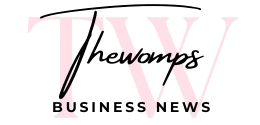Globally, in 2008, around 89% of children aged six to twelve were enrolled in primary education, and this proportion was rising. Under the Education For All programs driven by UNESCO, most countries have committed to achieving universal enrollment in primary education by 2015, and in many countries, it is compulsory. The division between primary and secondary education is quite arbitrary, but it generally occurs at about eleven or twelve years of age. Some education systems have separate middle schools, with the transition to the final stage of secondary education taking place at around the age of fifteen. Schools that provide primary education, are mostly referred to as primary schools or elementary schools. Primary schools are often subdivided into infant schools and junior schools.
- A side effect of the process of formalization is that the educational experience becomes more abstract and more removed from daily life.
- There is no broad consensus as to what education’s chief aim or aims are or should be.
- In most developed countries, a high proportion of the population (up to 50%) now enter higher education at some time in their lives.
In Africa, the New Partnership for Africa’s Development has launched an “e-school program” to provide all 600,000 primary and high schools with computer equipment, learning materials and internet access within 10 years. An International Development Agency project called nabuur.com, started with the support of former American President Bill Clinton, uses the Internet to allow co-operation by individuals on issues of social development. While informal learning often takes place outside Education Newsal establishments and does not follow a specified curriculum, it can also occur within educational settings and even during formal learning situations. Educators can structure their lessons to directly utilize their students informal learning skills within the education setting. Programs at ISCED level 3, or upper secondary education, are typically designed to complete the secondary education process.
Their book is banned from dozens of districts, but has helped countless young readers
October 21, 2022 • If the bill were to become law, it could affect not only schools but also programs, events and literature at any federally-funded institution. In fact, many aspects of learning — in homes, at schools, at work and elsewhere — are evolving rapidly, along with our understanding of learning. An innovative fellowship program for African institutions in Ghana, Kenya, Nigeria, South Africa, Tanzania and Uganda to host an African-born scholar to work in projects in research collaboration, graduate student teaching/mentoring and curriculum co-development. Department of State’s Bureau of Educational and Cultural Affairs , is for U.S. graduating college seniors, graduate students, professionals & artists.
New Mental Health Education guidance launched
If learners have a personal interest in what they are informally being taught, learners tend to expand their existing knowledge and conceive new ideas about the topic being learned. For example, a museum is traditionally considered an informal learning environment, as there is room for free choice, a diverse and potentially non-standardized range of topics, flexible structures, socially rich interaction, and no externally imposed assessments. In the past, those who were disabled were often not eligible for public education. Children with disabilities were repeatedly denied an education by physicians or special tutors.
Joseph Chimombo pointed out education’s role as a policy instrument, capable of instilling social change and economic advancement in developing countries by giving communities the opportunity to take control of their destinies. The 2030 Agenda for Sustainable Development, adopted by the United Nations General Assembly in September 2015, calls for a new vision to address the environmental, social and economic concerns facing the world today. The Agenda includes 17 Sustainable Development Goals , including SDG 4 on education. It spans the period between the typically universal compulsory, primary education to the optional, selective tertiary, “postsecondary”, or “higher” education of ISCED 5 and 6 (e.g. university), and the ISCED 4 Further education or vocational school.
